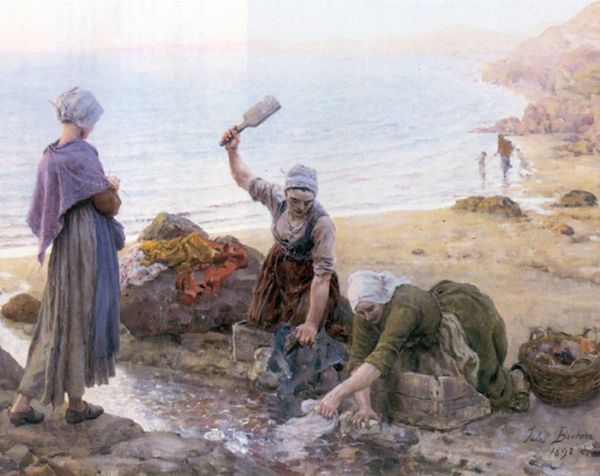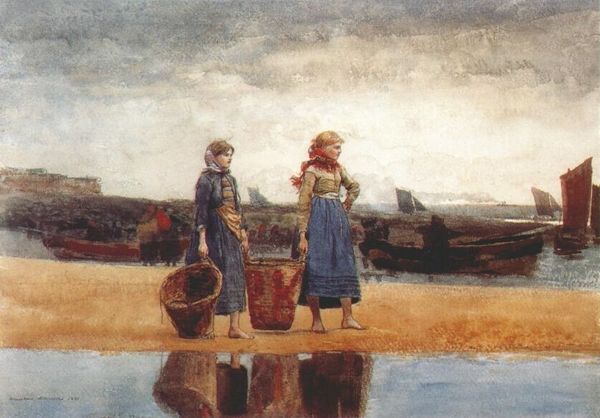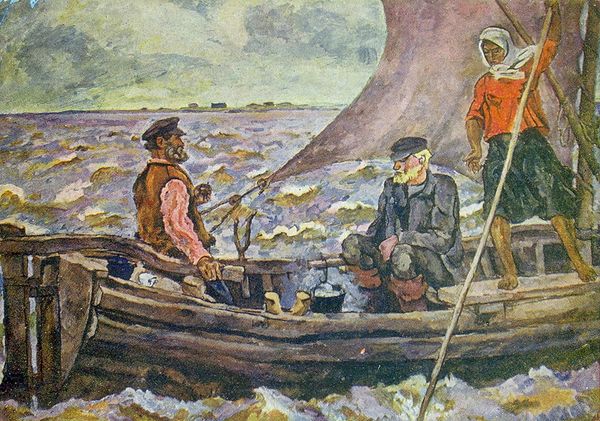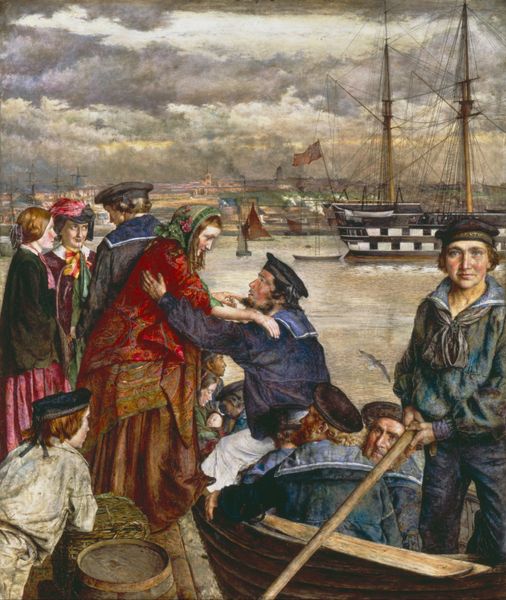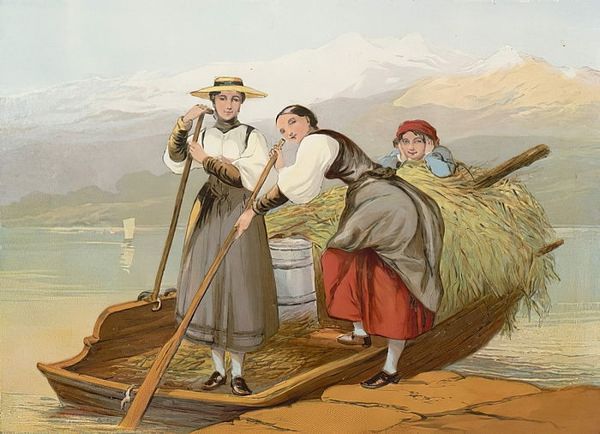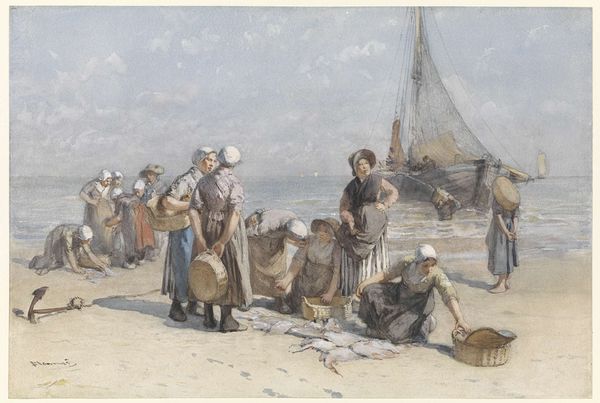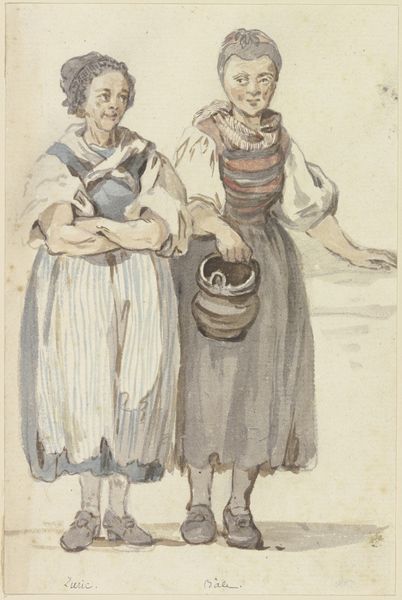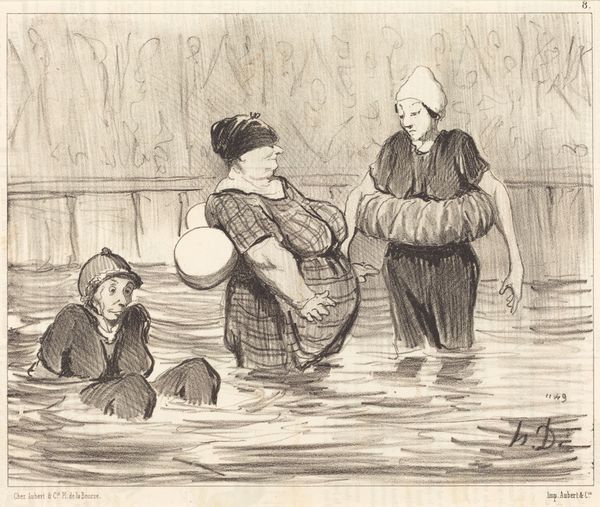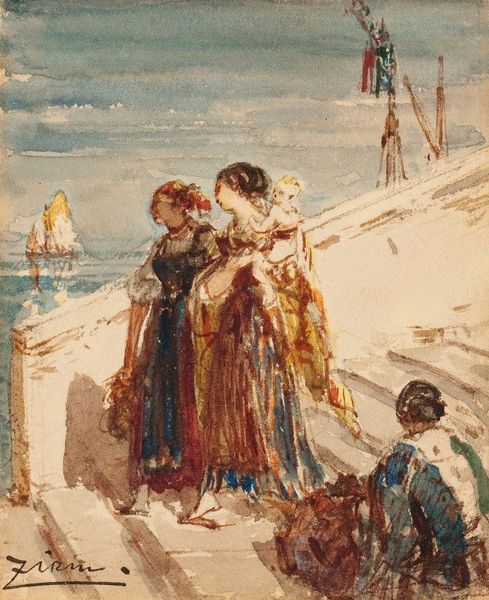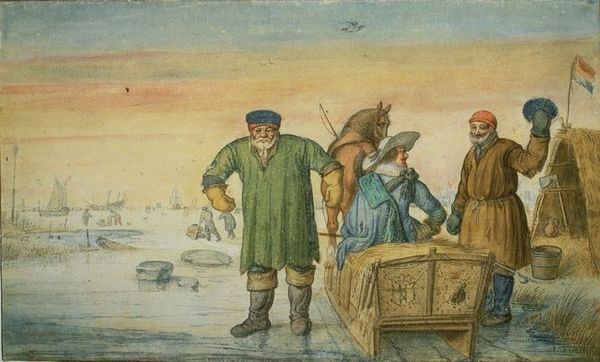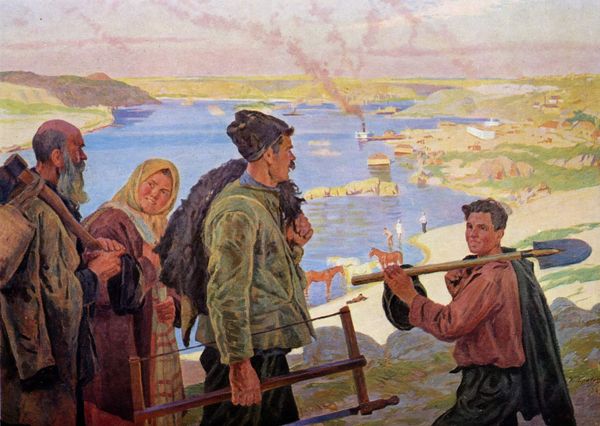
painting, plein-air, watercolor
#
portrait
#
painting
#
impressionism
#
plein-air
#
landscape
#
oil painting
#
watercolor
#
genre-painting
#
realism
Copyright: Public domain
Curator: I'm immediately struck by how melancholy this piece feels, despite the implied industry and bustling scene in the background. There's a certain stoicism etched on the faces of these women. Editor: Indeed. Winslow Homer painted this watercolor, titled "Fisherwomen, Cullercoats," in 1881. It is painted in the plein air tradition and we can note here Homer's commitment to representing working-class women with both dignity and, as you note, perhaps a touch of sadness. Curator: It’s that classic maritime grey sky, isn’t it? Heavy with the threat of rain, mirroring the weight in their stances. These women look timeless but grounded in a harsh reality. I think what strikes me are those shawls and headscarves: repeated patterns and how such cloths are a part of women's universal history to work the sea, like armour that doesn't weigh too much. Editor: Those very garments tell tales. The shawls, likely knitted from coarse wool, weren't merely functional; they symbolized heritage, community, and skill. Passed down through generations, each pattern carried whispers of ancestral knowledge and local tradition. Scarves for married women, and left unadorned, and others perhaps tell of the young. And that these scarves, these geometric patterns on their shoulders, are reflected by the sails of fishing vessels on the beach. They’re mirroring the human endeavour against a broader backdrop. Curator: Yes! You put your finger on it. So this isn’t just a picture; it’s a memory palace! What they would carry to face wind and weather. The artist seems to be revealing to us something profound about the human spirit to work through weather. Even, that it persists today. Editor: Absolutely. Homer wasn't just capturing a scene; he was archiving a way of life, documenting a cultural identity shaped by the rhythms of the sea. The low horizon line emphasizes their connection to both water and sky. This emphasizes the eternal elements that bind them to nature. Curator: I appreciate your iconographic perspective, truly. It is lovely how symbols evolve over time to form universal archetypes that appear to the mind's eye. Editor: Thank you! And this deep dive into these shawls and figures allows us a renewed awareness of working class resilience!
Comments
No comments
Be the first to comment and join the conversation on the ultimate creative platform.
